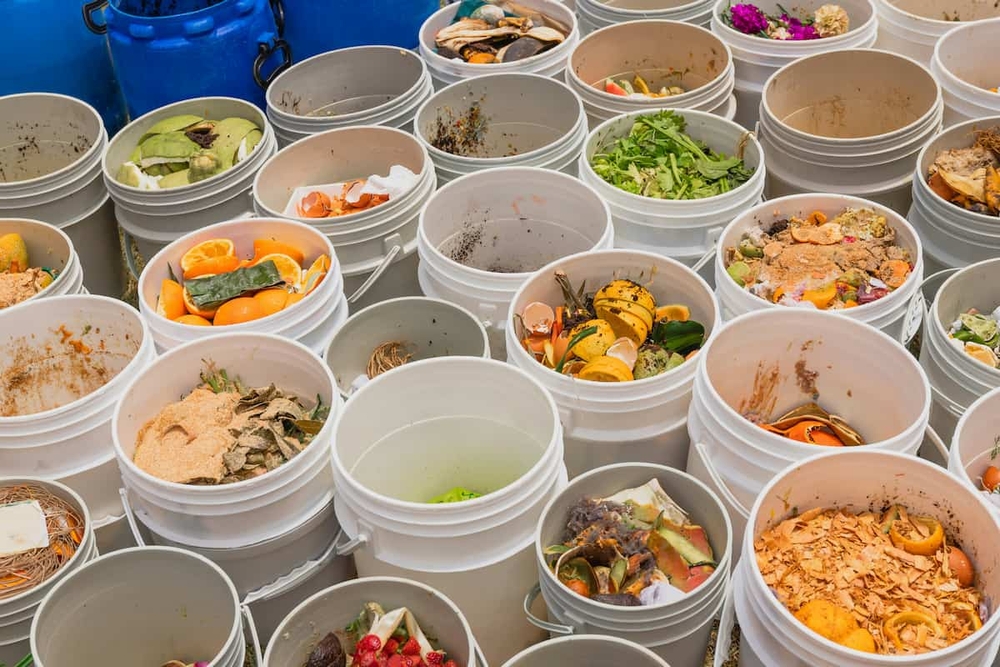10 Eco-Friendly Practices in Delivery-Only Kitchens
Table of Contents
CloudKitchens
How many tacos can be delivered from a 1000sqft restaurant?
The same amount as a 200sqft ghost kitchen.
Delivery-only kitchens — also known as ghost kitchens — have become a powerful force in the modern food industry. By eliminating the need for a dine-in space, they offer a highly efficient, scalable, and delivery-focused business model. But with this innovation comes responsibility. As consumers grow more environmentally conscious, the food delivery sector must rise to meet sustainability expectations. The good news? Delivery-only kitchens are perfectly positioned to lead the charge.
Unlike traditional restaurants, ghost kitchens operate with fewer physical constraints and more operational flexibility. This makes it easier to implement targeted, eco-friendly practices without drastically overhauling the business. From packaging to energy use, there are countless ways delivery-only kitchens can cut down on waste, reduce emissions, and become leaders in sustainable foodservice.
Here are ten eco-friendly practices that delivery-only kitchens can adopt to lessen their environmental footprint while improving operational efficiency.
1. Optimize energy usage
Delivery-only kitchens can make significant energy savings by focusing resources only on food production. Since there’s no need for ambient lighting, customer seating, or dining area climate control, energy efficiency becomes easier to achieve.
Kitchens can go a step further by installing LED lighting, using motion-sensor controls in low-traffic areas, and programming equipment to shut down during off-peak hours. Energy audits can also help identify energy-hogging appliances or inefficient systems.
2. Implement smart technology
Smart kitchen technology is revolutionizing how food businesses manage operations. AI-based tools can forecast demand more accurately, automate food prep, and alert staff to overproduction in real time. For instance, some systems analyze historical sales and real-time order data to recommend optimal production levels, significantly reducing waste.
Automated inventory management systems ensure stock rotation and flag expiring products. These innovations not only reduce environmental impact but also boost profits by cutting excess costs.
Read more: Restaurant Technology: Boost your business with the best technology trends
3. Adopt sustainable packaging
With delivery at the core of ghost kitchens, packaging is a critical consideration. Switching from single-use plastic to biodegradable, compostable, or recyclable materials can drastically reduce landfill contributions.
Options like molded fiber, paper-based containers, or plant-based plastics are not only environmentally friendly but also help brands appeal to eco-conscious consumers. Some companies are exploring reusable packaging systems, where containers are collected, sanitized, and reused, closing the waste loop.
Read more: The power of unique food packaging in customer experience
4. Source locally
Sourcing ingredients locally is one of the most effective ways to reduce your carbon footprint. Shorter supply chains mean less fuel burned in transportation and fresher ingredients for customers.
Local sourcing supports nearby farmers and food producers, fosters community connections, and can even yield cost savings in the long run. For multi-location ghost kitchen operations, building hyperlocal supplier relationships in each market is key.
5. Minimize food waste
Food waste is a major issue in commercial kitchens. It not only leads to lost revenue but also contributes significantly to methane emissions in landfills. High-volume delivery kitchens can cut waste by using detailed sales forecasting, implementing strict inventory controls, and repurposing excess ingredients into specials or staff meals.
Kitchens can also set up donation partnerships with local shelters and food banks or compost organic waste when possible.
Read more: Reduce waste, save costs: essential food waste management strategies for restaurants
6. Utilize energy-efficient appliances
Energy-efficient equipment can reduce energy consumption by up to 30% compared to older models. Invest in Energy Star-rated ovens, refrigerators, fryers, and dishwashers. While these appliances may carry a higher upfront cost, they typically pay for themselves through long-term energy savings. Regular maintenance and cleaning are also important to keep machines running at optimal efficiency.
7. Educate staff on sustainability
A sustainable kitchen starts with a knowledgeable team. Train staff on eco-friendly procedures such as reducing food waste, properly sorting recyclables, and following energy- and water-saving protocols.
Clear guidelines and visual aids help reinforce best practices. You can even gamify sustainability with team challenges and track key performance indicators (KPIs) like waste reduction or recycling rates.
Read more: Restaurant hiring/staff 101: Comprehensive guide
8. Implement water-saving techniques
Ghost kitchens can conserve significant amounts of water by installing low-flow faucets, water-efficient dishwashers, and leak detection systems. Encourage mindful habits like turning off taps during cleaning or defrosting. Reusing gray water for non-food purposes, such as floor cleaning, is another innovative practice. Regular maintenance ensures no hidden leaks are wasting water.
9. Collaborate with sustainable delivery services
The delivery method plays a big role in the environmental impact of ghost kitchens. Partnering with services that use bicycles, electric scooters, or electric vehicles reduces carbon emissions dramatically.
Some cities have co-ops or courier collectives dedicated to eco-conscious delivery. Offering customers an option to choose a “green delivery” can enhance your brand reputation and build loyalty.
10. Monitor and report sustainability metrics
Tracking your sustainability efforts is essential for accountability and improvement. Use software tools or manual logs to measure waste volumes, energy usage, packaging materials, and water consumption. Share these reports internally and even with customers to highlight progress. Benchmarking performance and setting future goals keeps your kitchen aligned with best practices in environmental stewardship.
Ready to go green with your ghost kitchen?
CloudKitchens gives you the tools and infrastructure to build an efficient, scalable, and sustainable delivery-only food business. Whether you’re launching a new brand or optimizing your current operations, we can help you meet your sustainability goals from day one. Join CloudKitchens today and take the first step toward a greener future in food delivery.
DISCLAIMER: This information is provided for general informational purposes only and the content does not constitute an endorsement. CloudKitchens does not warrant the accuracy or completeness of any information, text, images/graphics, links, or other content contained within the blog content. We recommend that you consult with financial, legal, and business professionals for advice specific to your situation.
More insights & stories
There’s more where that came from.
Get in the know and check out our additional insights


